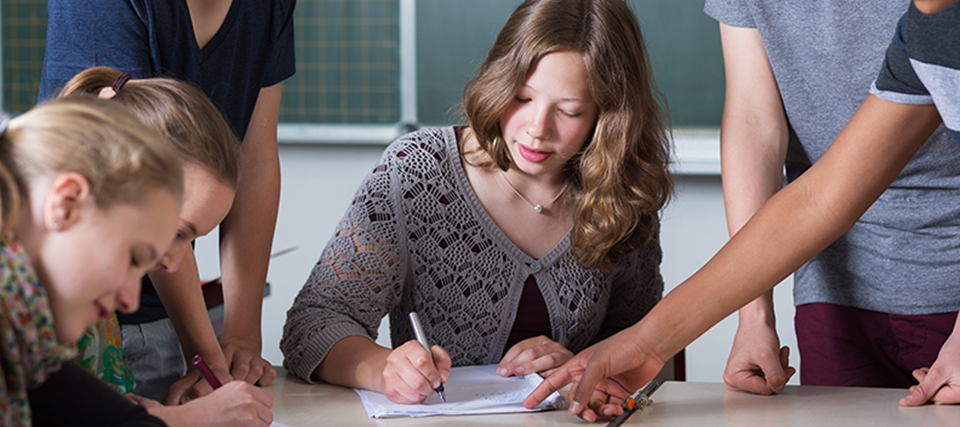Making Social-Emotional Learning Work in Middle School
Social-emotional learning (SEL) is having a ‘moment’ in education, and society as a whole, right now, as the pandemic continues to influence so many facets of our lives. As a former kindergarten teacher, SEL was a big part of my teaching practice, curriculum, and the culture of my classroom. As students are learning to ‘do school’ for the first time, this makes sense. We need to learn how to be together for eight hours a day, to build and navigate new friendships, to learn from and with one another, all while developing impulse control and self-regulation. How can you teach kindergarten without teaching social-emotional learning?! However, as students grow older and approach middle school and high school, it is often assumed that they have the tools and the skills of the SEL of their earlier years, and so can get right to the business of learning content. But is that an accurate or fair assumption to make?
Especially right now, after the disruption and upheaval of the last nearly two years, aren’t we all learning how to “do school” again? And in many ways, this could be more challenging for middle school students than anyone else. Many middle schoolers, in the throes of adolescent development and the social and emotional upheaval that comes with it in the best of times, were thrust into an unpredictable, socially isolated, remote learning environment. (Not to mention the trauma the pandemic wrought on millions of families.) At the point in time that middle school students are developing their identities, shifting attachments towards their peers, and looking to social affirmation as a means to do so, a lack of consistent in-person schooling disrupted this process.
“Young people need really developmentally rich experiences and opportunities across multiple contexts in order to really develop a sense of sense that can [help them] feel successful...or proud of the way that they show up within the world.’ But with the pandemic, ‘those consistent contexts have really been pretty hugely disrupted over the past two years."
- The Pandemic Has Shaken Students’ Sense of Themselves
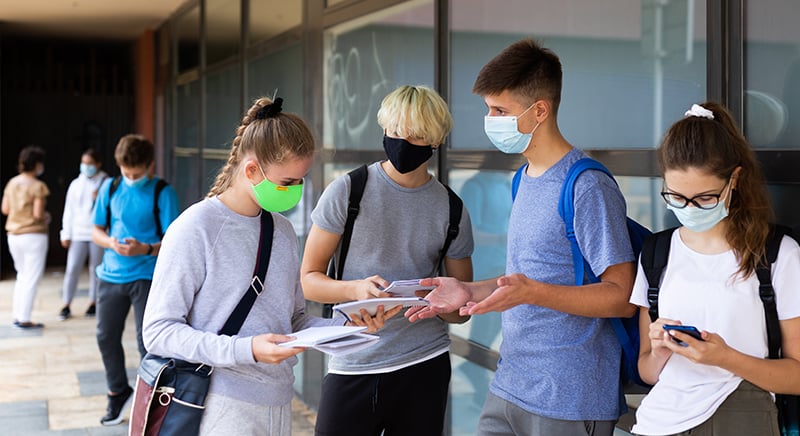
So where does that leave us? We know that middle schoolers are faced with huge personal and social development challenges, and trying to exclude social-emotional factors from academics is virtually impossible. Students of all ages bring their emotions to every experience, both positive and negative. Adolescence is a time when emotions are running incredibly high, and the task of balancing academic learning and emotional experiences is already a big challenge for a student’s developing brain. Expecting students to do this independently, in a high stress environment, is a recipe for disaster. Students can learn how to manage the emotions that coexist with academic learning, as well as valuable social-emotional competencies. How can we support students’ continuing social-emotional learning in our classrooms?
“More” SEL isn’t necessarily the answer. Often for younger students, SEL curricula are made up of focused lessons that are implemented to address developmental needs. Strategies like “feelings talks” might work for kindergarten, but are unlikely to inspire the same kind of engagement for middle school students. Older students need different things, have different questions, and “too much of what constitutes SEL...feels patronizing to teenagers and fails to address their core psychological needs and motivations”. Older students benefit more from embedded SEL than from stand-alone lessons, but more importantly, they need to feel that they are in a safe space in order to be able to practice any SEL skills that they are learning. In thinking about solutions to the SEL question we can focus on two main areas: creating a low-stress, safe environment for students; and embedding SEL skills into our curriculum.
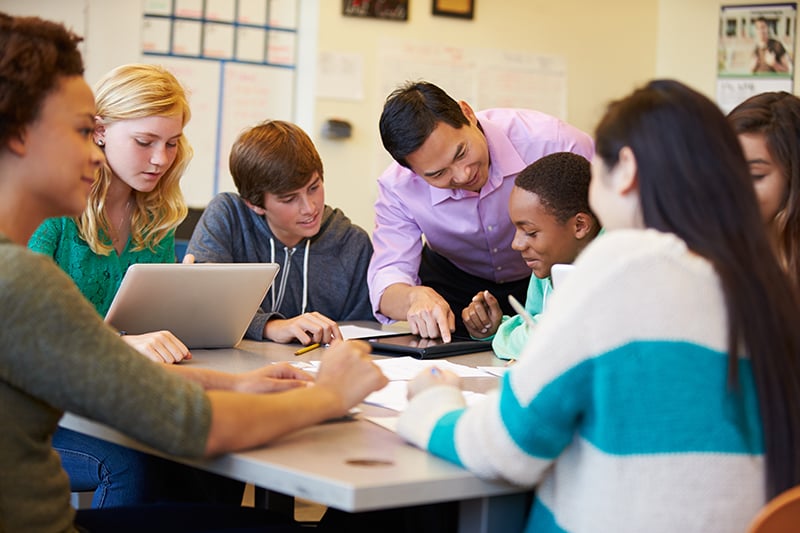
Creating a safe space for SEL
In order for students to be open to learning and practicing social and emotional competencies freely, they must feel safe, secure, and low-stress. All the SEL skills in the world are of little use when students are in a high-stress environment. When under stress, a ‘fight or flight’ response kicks in, and can overrule social competencies, like managing emotions or impulse control. While we can’t control every aspect of our students’ environments that may cause stress, we can control the culture and environment of our classrooms to be as low-stress as possible, for all of our collective well-being.
To begin, get to know your students. It sounds simple, but building relationships with your students is a fundamental part of creating a safe space. Students need to feel seen and heard, so they can develop enough trust to be comfortable in your classroom. Practicing social skills and developing emotional competencies takes vulnerability – and students can’t be expected to be vulnerable with someone they don’t know or trust. Relationship-based teaching practices give time and space for students and teachers to get to know one another, not just at the start of the school year, but throughout the year. Adolescents’ sense of self is fluid, and their identity changes in large and small ways over the course of a school year. Relationship-based teaching builds authentic relationships with students that are based on the affect, interests, needs, and perspectives of the student themselves and your experiences with them.
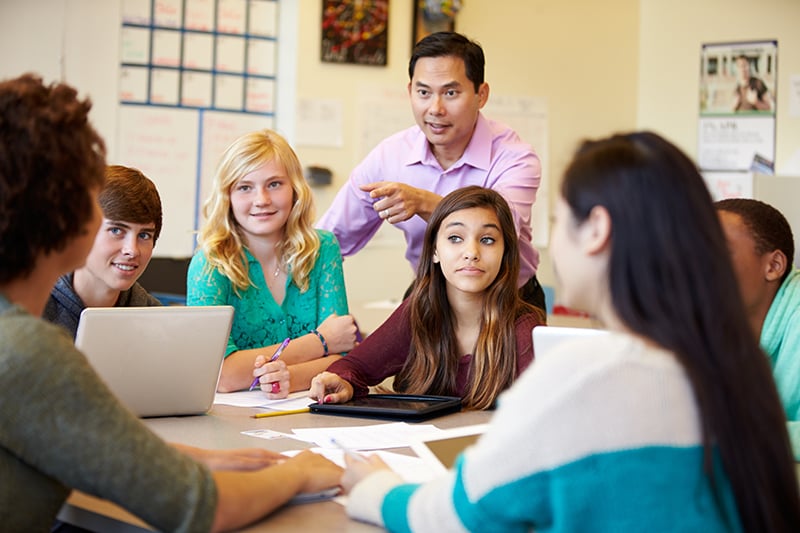
We know that grades can be a source of stress for students, and while you may not be able to ignore grading, you can deemphasize grades in your classroom. Whether we like it or not, grades have power. Students interpret what we value through what we grade, and we can choose how we use that power. We can probably all agree that we want students to be able to think creatively, try new things, work collaboratively, and learn from mistakes – all of which rests on an SEL foundation, and all of which is nearly impossible to do authentically if students are constantly worried about how they will be judged (or graded) for each decision they make.
Benjamin & Rosamund Zander, in their book The Art of Possibility, talk about the concept of ‘giving each other an A’. More than just giving the benefit of the doubt, giving each other an A means that we commit to seeing one another in the best possible light, and from a place of unconditional positive regard. Rather than working from a zero up to an A, as is the common practice in school; this paradigm lets everyone begin with the A, and then having to actively work oneself away from it. This takes the idea of being ‘seen’ to a whole new level, and when embraced as part of the culture of a classroom or school, can have dramatic effects on students’ stress levels and perceptions of themselves. Imagine the pressure that can be lifted when you don’t feel you have to ‘prove yourself’ to someone - you are free to think, learn, and express yourself in a more authentic way.
When possible, put the focus on students’ active learning processes, rather than on the end product or the grade repercussions. Giving students the freedom to take a risk in a project, to work creatively, and to learn from their mistakes, enables them not only to learn valuable academic skills, but also to practice and learn SEL skills as well.
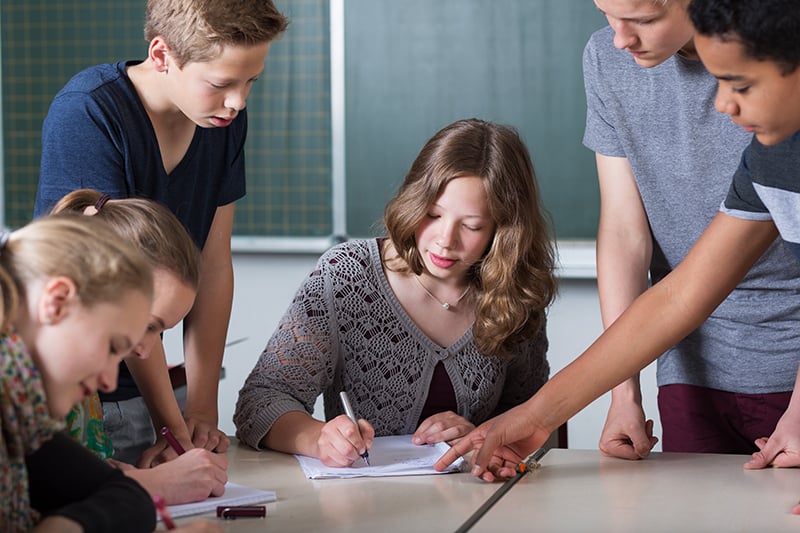
Embedding SEL Opportunities into Your Curriculum
If students have a safe space in which to practice their growing SEL competencies, they then need opportunities to do so. There are a number of ways to do this in your classroom, and you will find the strategies that work best for you and for your students each year. Here are some to get you started:
- Establish classroom expectations together – Giving students a set of ‘rules’ on day one, before any relationships have been established can be alienating. Take the time to talk with students about things like classroom practices, respectful dialogue, and group work; then create your classroom rules or expectations together. Much like co-creating learning targets, this gives the students a voice in the process, so they can see themselves reflected in the values of the classroom. It also gives you an opportunity to learn about what abstract concepts like ‘respect’ or ‘doing your best’ actually mean to your students.
- Add more time for collaboration and conversation – You may already have students in group work most of the time, but a good practice to get into is trying to add one more opportunity for conversation or collaborative decision making to each lesson or Unit as you’re teaching. Giving students more time to work and talk together will give them the freedom to have deeper conversations, rather than making surface observations and decisions because they are worried about time. Establishing a framework for these discussions or decision making can be helpful as well, so students have a predictable format in which to engage.
- Give ample opportunities for rethinking and trying again – Knowing that the first try isn’t going to be the only try, or that test answers can be corrected, brings the value of seeing mistakes as learning opportunities to life in a tangible way. While a natural part of life, learning from one’s own mistakes can be an uncomfortable experience, whether academically or socially. Normalizing this process is beneficial on many levels, and presents a more authentic real-world view of life and learning.
Audra Selkowitz is a Senior Education Developer at VEX Robotics.
Like this article? Discuss it in the VEX Professional Learning Community.
